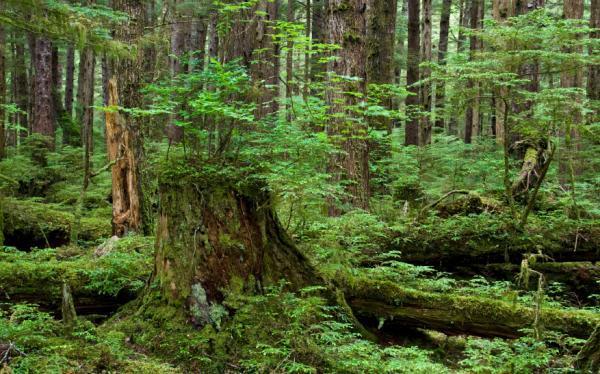Old forest is an important carbon sink
In contrast to the notion of trade for the past 40 years, a new analysis published in Nature shows that the old forest area is often 'carbon swamp' - constantly absorbing carbon dioxide from the atmosphere and mitigating the Climate change for centuries.
However, the old forest areas around the world are not protected by international organizations and do not have important significance in the national 'carbon budget' as the Kyoto Agreement has indicated. That view is based mostly on the findings of a single study from the late 1960s, which has become an accepted theory. Scientists say this needs to be revised.
Researchers from Oregon State University and a number of other institutions concluded in the report: 'Carbon accounting rules for forests should advocate for the protection of old forest areas from outside impacts. Large amounts of carbon, even soil carbon, will return to the atmosphere if these forest areas are disturbed '.
Analysis of 519 different studies showed that 15% of Northern Hemisphere forest land is unregulated, especially a large amount of old-growth forests, which account for up to 10% of global carbon dioxide absorption.
In forests between 15 and 800 years of age, the carbon balance in the forest and soil is often positive - meaning they absorb more carbon dioxide than liberate.
'If you are interested in emitting greenhouse gases and looking at forests from a carbon perspective, the best thing is to ignore them,' Beverky Law said. He is a professor of forest science at OSu and director of the AmeriFlux network, which has 90 research sites in North and Central America, helping to control the global 'budget' of carbon dioxide.

Tropical old forests on the west coast of the UK and Columbia.(Photo: iStockphoto / Robert Koopmans)
Forests use carbon dioxide as the basic components of building organic molecules and keeping carbon dioxide in wood tissue, but this process is limited. Research from the 1960s using data for 10 years from a plantation suggested that forests 150 years and older would release and absorb the same amount of carbon, and thus become 'neutral'.
Law said: 'That's the story we learned for decades in ecological classes. But it is based on the observation of a study on a forest type, and it simply cannot be applied to all cases. Current data clearly shows that carbon accumulation can continue to occur in centuries-old forests. '
When an old forest is harvested, a new source of carbon is pushed into the atmosphere for 5 to 20 years, before younger trees start absorbing and sequestering more carbon than they release. The formation of new, natural or artificial forests, is often accompanied by disturbance to and from plants, causing decomposition to exceed redevelopment productivity.
The old forests continue to sequester and absorb carbon for centuries. When individuals die from lightning strikes, insects, fungi or other causes, the second dome layer waits to replace and continues to maintain productivity.
One implication of research is that countries with substantial amounts of old forests can easily reduce the release of greenhouse gases if these forest areas are not touched. It will also be necessary for land surface models to try to determine excess carbon to be able to describe the function of old forests more accurately.
Many conclusions of the study are based on data from the AmeriFlux chapter and CarboEurope programs. Funding sources include the US Department of Energy, CarboEurope, the European Union, and other organizations. The authors come from many academies in the United States, Belgium, Germany, Switzerland, France and the United Kingdom.
- Scientists find a low-cost and effective solution to combat deforestation
- Drought, forest fires turn Amazon into a source of carbon emissions
- Drought threatens Amazon carbon sinks
- Detecting carbon in soil being released into the atmosphere
- Carbon fiber can store energy inside the car body
- Measuring carbon to save tropical forests
- Carbon sinks are weakening
- European forest at the risk of saturation absorbs CO2
- Excavation of 380 million year old fossil forest
- The Amazon River emits most of the carbon absorbed by the Amazon
- Forest fire reduces the northern hemisphere temperature
- The most exotic trees on Earth
 Is the magnetic North Pole shift dangerous to humanity?
Is the magnetic North Pole shift dangerous to humanity? Washington legalizes the recycling of human bodies into fertilizer
Washington legalizes the recycling of human bodies into fertilizer Lightning stone - the mysterious guest
Lightning stone - the mysterious guest Stunned by the mysterious sunset, strange appearance
Stunned by the mysterious sunset, strange appearance